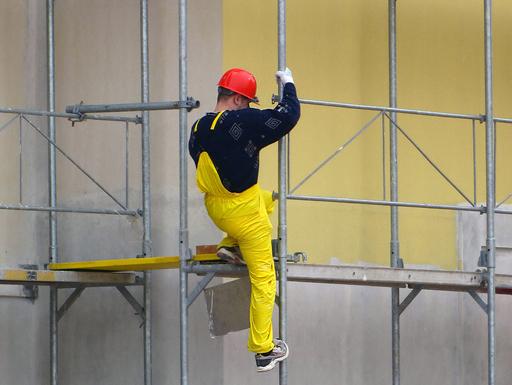Inclusion is everywhere in higher education – in strategic plans, institutional values, competency frameworks, even in job interviews. But when it comes to the classroom, this crucial element can often feel more like a buzzword than a lived reality.
This is especially true in English for academic purposes (EAP) teaching, where students come from across the globe, speak a range of languages and navigate unfamiliar academic cultures. Even in such incredibly diverse classrooms, teaching often sticks to a narrow, one-size-fits-all idea of what “academic English” should look like. It leans on simplified or supposedly “neutral” materials, an approach that can do more harm than good.
Rather than supporting multilingual and multicultural students, this model risks reinforcing the very structures that marginalise them. Students are expected to adapt to dominant norms, often without being encouraged to bring their own voices or experiences into the academic space.
- Resource collection: English as a second language in higher education
- Give everyone a chance to speak in class
- Mind your language: inclusive teaching for international students
If we’re serious about inclusion, it can’t just mean helping students “fit in”. It means embedding this mindset into how we teach, the materials we use, the tasks we set, the way we assess and the policies we follow. And it’s not just about making space at the table – it’s about questioning how the table was built in the first place.
Five areas to focus on to make EAP teaching more inclusive
A more inclusive EAP approach can be built around five key dimensions of inclusion:
- linguistic: valuing students’ full language repertoires, not just their English
- cultural: including materials and perspectives that reflect diverse backgrounds and lived experiences
- educational: acknowledging and adapting to varied academic histories and learning styles
- academic: challenging rigid standards of “correctness” and opening space for different voices
- social: building a sense of community, trust, and safety so students can contribute with confidence.
These dimensions can help guide decisions around curriculum, content and assessment in ways that support meaningful inclusion and a genuine sense of belonging.
What inclusive EAP teaching looks like in practice
Here are clear, actionable ways to make our EAP teaching more inclusive:
Build support into our instruction
Tap into ways to personalise the learning experience; start with informal diagnostics to understand students’ goals and challenges (for example, a short questionnaire or a brief chat during the first week to find out what students hope to achieve and any concerns they have). Hold regular, short one-to-one check-ins to help shape learning plans as the course progresses. Match task difficulty to students’ readiness while maintaining high expectations.
If students need extra support, use scaffolded materials. Offer choices in how students complete in-class tasks; offer writing, speaking or visual formats, for example. And, if possible, build in flexibility with deadlines.
Make content culturally relevant
Reading lists and case studies can be selected to incorporate global perspectives and cultural diversity. Encourage students to connect course topics with their own backgrounds and celebrate linguistic diversity in discussion. This can include acknowledging and valuing different ways of expression, inviting students to share how certain concepts are understood or articulated in their native languages, and creating opportunities for discussions around how language shapes thought.
Show that students’ full language repertoires are welcome and valued. This can be achieved through brainstorming sessions in students’ first language, using bilingual glossaries, and allowing code-switching – that is, switching between languages in conversation to better understand or express ideas.
Make assessment more flexible
Provide multiple ways for students to demonstrate understanding, including essays, oral presentations or podcasts. Shift the focus and purpose of assessment to feedback and progress, and away from final grades. Allow revisions and resubmissions where possible; this gives students the opportunity to reflect on feedback, deepen their understanding and improve their work, all of which supports meaningful learning and growth.
Reflect on your own teaching and be prepared to adapt
Collect regular feedback from your students about what’s working and what’s not. Observe classroom dynamics and pay attention to which students are participating and who isn’t. For example, you might notice that some students consistently stay quiet during group work; this could signal a need to adjust how groups are formed or how tasks are framed. Share your ideas with colleagues and stay open to adjusting your approach. Small changes, like offering anonymous feedback forms or trying different participation formats, can make a big difference in creating a more inclusive learning space.
Making inclusion sustainable
No individual teacher can do this work alone, and it takes more than just goodwill. Institutions and departments have a role to play in embedding inclusive values into everyday practice. To build supportive infrastructure, universities can:
- provide protected time for inclusive planning, collaboration and resource design
- train all teaching staff – not just EAP tutors – in decolonial and inclusive pedagogy
- include multilingualism and inclusive teaching in promotion and appraisal criteria
- connect EAP with subject departments through joint sessions or co-teaching pilots
- encourage knowledge-sharing among staff through communities of practice.
Looking forward
To make our classrooms truly inclusive, we need to stop seeing difference as a problem and start recognising it as the strength it is. When we shift our mindset from “helping” students to learning alongside them, EAP can become a space for equity, not just instruction.
In considering implementation, we’d like to propose the following definition, one that, while rooted in the context of EAP, can also apply to inclusive teaching practices across the broader landscape of HE:
“Inclusion in EAP refers to a dynamic, relational process of designing and delivering pedagogical practices that recognise, value and respond to the diverse linguistic, educational, academic, cultural and social realities of learners. It entails a commitment to flexibility, equity and critical engagement to enable meaningful participation, collaboration and success for all students.”
This isn’t the final word but a starting point, one that invites us to adapt inclusion to each of our particular contexts.
Angelos Bakogiannis is the research and publications officer (2024-2027) for BALEAP: the Global Forum for EAP Professionals, which is a voluntary position. He is principal investigator of the BALEAP-funded project “Exploring Inclusive Teaching Practices of English for Academic Purposes (EAP) in Higher Education (HE)”, the preliminary findings of which have been published in JLDHE and The Language Scholar.
If you would like advice and insight from academics and university staff delivered direct to your inbox each week, sign up for the Campus newsletter.




comment